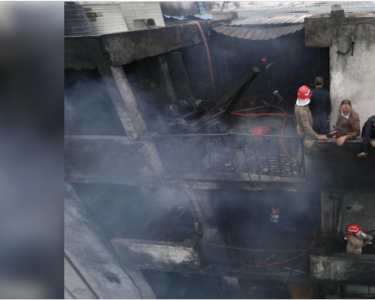HOMS, Oct 13 (NNN-XINHUA) – A well-preserved Roman-era mosaic panel was discovered in a residential suburb in the Syrian central province of Homs, local antiquities authorities announced yesterday.
The relic, which dates back to the 4th century, is inlaid with thousands of coloured mosaic pieces, made of small grains and glass, in a pattern unique among existing excavations, Syrian archaeologists told Xinhua, in the city of al-Rastan, where it was discovered.
Twenty metres long and six metres wide, the flooring panel belongs to a building’s hall, probably a castle, said the archaeologists from Homs and Damascus, adding that, some other fragments to the entire mosaic are yet to be unearthed.
Nevertheless, more than 90 percent of the painting’s details are intact, said Hummam Saad, director of the excavation and archaeological studies at the Directorate General for Antiquities and Museums, who dubbed it the “most complete and rare” painting unearthed in Syria.
He noted that, with detailed precision, the mosaic depicts a rare scene of Amazon characters, a water deity and nymphs of Greek mythology, while showing names of the kings who participated in the legendary Trojan War, fought in western Anatolia.
Hussam Hamish, director of Homs’ archaeology department, told Xinhua that, the relic was found in a very good condition and is of “global significance” in terms of the depicted ancient spectacle and the craftmanship involved.
Eight other mosaic panels have been detected in al-Rastan, and the excavation work is continuing, according to Syrian archaeologists.– NNN-XINHUA






